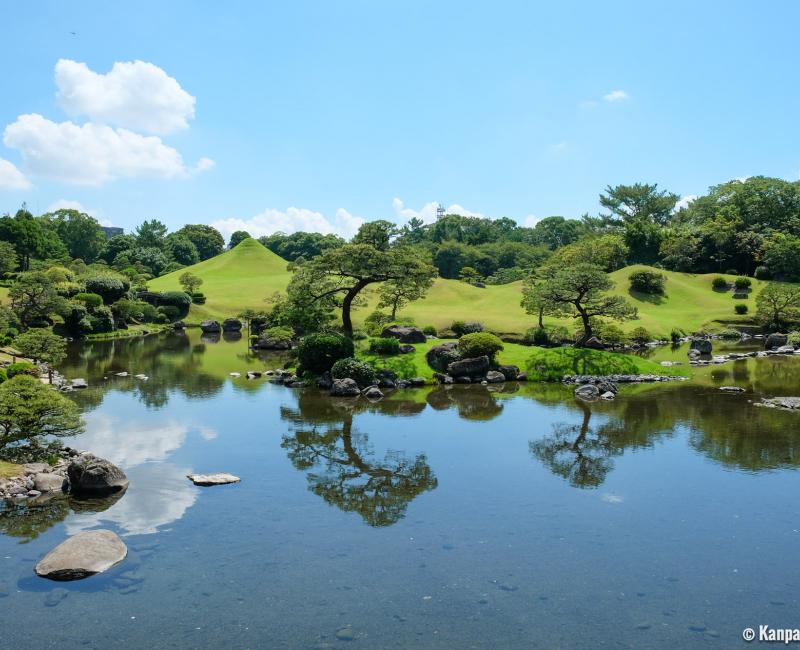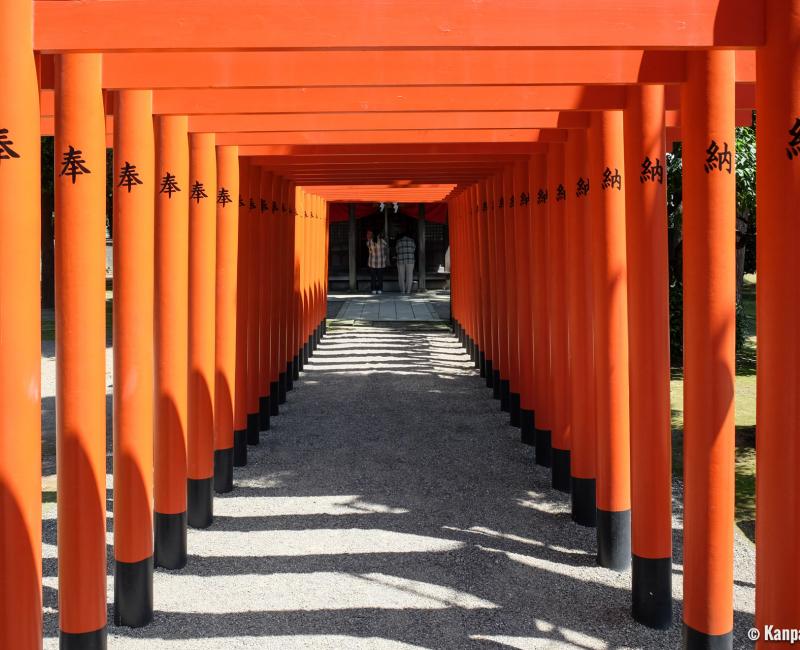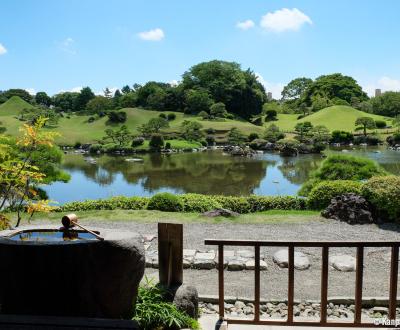Suizen-ji Joju-en
The Delightful Japanese Garden in Kumamoto
Suizen-ji Joju-en is a vast Japanese garden located in the east of Kumamoto on Kyushu Island in Japan. The powerful Hosokawa clan built this garden in the 17th century as a recreation of the fifty-three stations of the Tokaido Road connecting Tokyo and Kyoto during Edo period (1603 – 1868). The teahouse offers a break to admire the scenic landscape in a refined atmosphere.
Traces of Kumamoto’s ancient status of castle 🏯-town can be discovered throughout the city, and nice surprises await visitors who dare explore beyond downtown Kumamoto. About half an hour by tram from the JR station, Suizen-ji Joju-en garden is a majestic heritage from the powerful feudal Hosokawa lords who reigned on the domain for several centuries.
At the origins was Suizen-ji temple, built in 1632 by Hosokawa Tadatoshi. His heirs continued to embellish the site with the arrangement of green spaces around the natural pond renowned for its clear waters. A few years later, the temple was relocated, and a teahouse was harmoniously built in the park renamed Joju-en.

The miniature Mount Fuji
The traditional garden is of tsukiyama style, with man-made hills and wonderful Japanese pine trees that are still carefully maintained. In spring, the one hundred and fifty cherry trees 🌸’ blooming enliven the landscape and the alleys and visitors gather to celebrate hanami. All year long, various shades of green harmoniously blend with the grey tones of the rocks arranged on the pond’s shores.
This landscape is not, as people may think, a reference to the green volcanoes of the area, such as Mount Aso and Mount Kuju. The model landscape is in fact found way beyond the borders of Kyushu Island. Suizen-ji Joju-en is indeed a smaller scale replica of the ancient feudal Tokaido road between Tokyo and Kyoto. The pond thus is a reminder of Lake Biwa, and among the mountains that were recreated, a little bit taller than the others, the characteristic symmetrical cone of Mount Fuji 🗻 can be distinguished.
Despite tall modern buildings somehow disrupting the horizon, the park has retained its original atmosphere and it is impossible not to feel in a timeless space. One would not be surprised to encounter a Kumamoto daimyo lord… or at least to sense their spirit. In the northern part of the garden, Izumi shrine, dedicated to the Hosokawa’s, offers a place of serenity, and its paths is nicely adorned by a small alley of vermilion torii ⛩️ gates dedicated to Inari.

The imperial teahouse
Another interest of the garden is the teahouse Kokin-Denju-no-Ma, covered buy a thatched roof that gives a nice conclusion to the visit. Although not the original teahouse, this old pavilion was relocated here from the former imperial capital Kyoto and has been part of the garden since 1912. Its tatami room offers a superb view on the centuries-old landscape that can be enjoyed relaxing.
Important notice: the multiple April 2016 earthquakes have not damaged the garden. The only impact is a slight lowering of the water level in the pond, noticeable when observing the colors on the rocks: the clearer marks on the stones indicate the previous highest level of the water.

